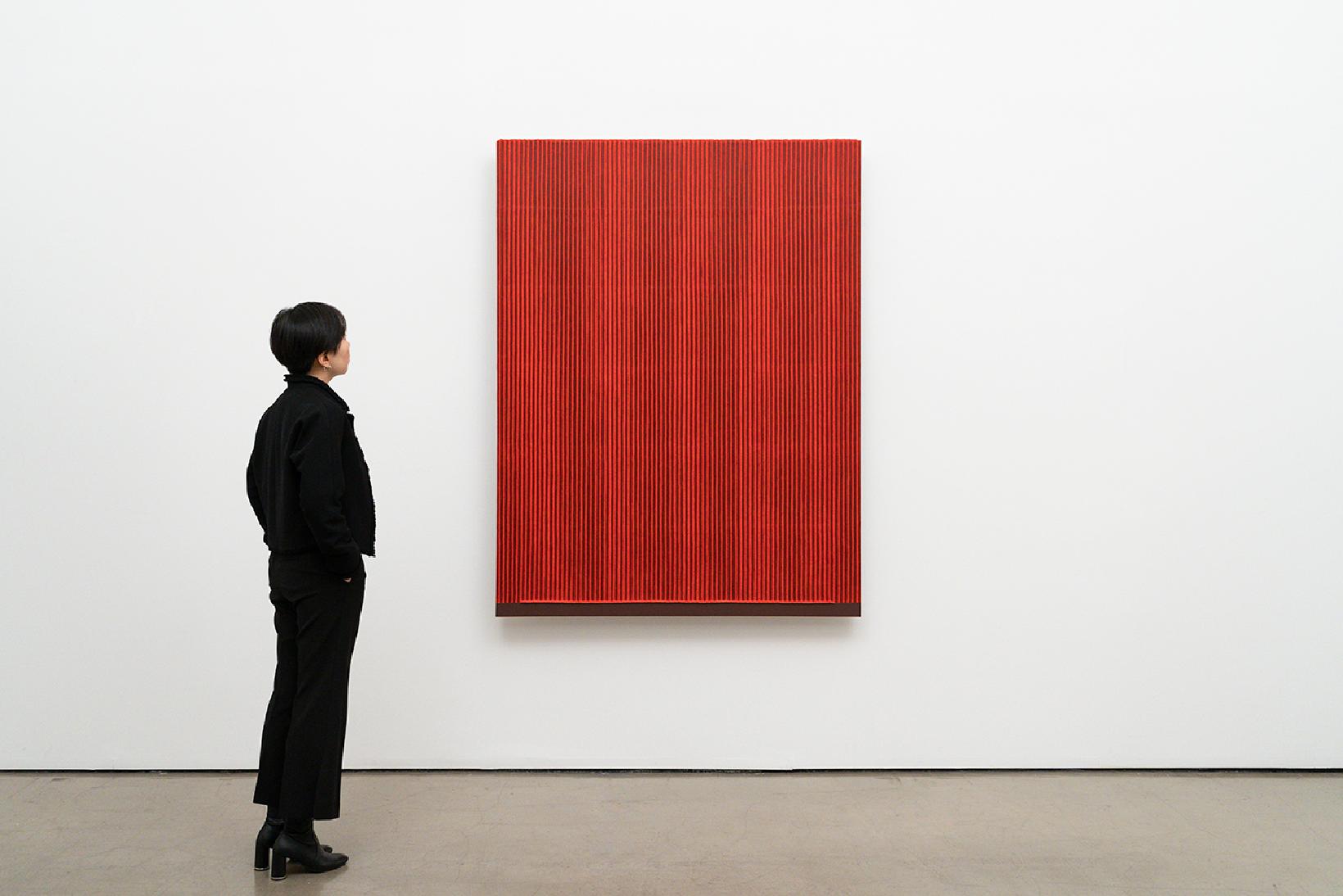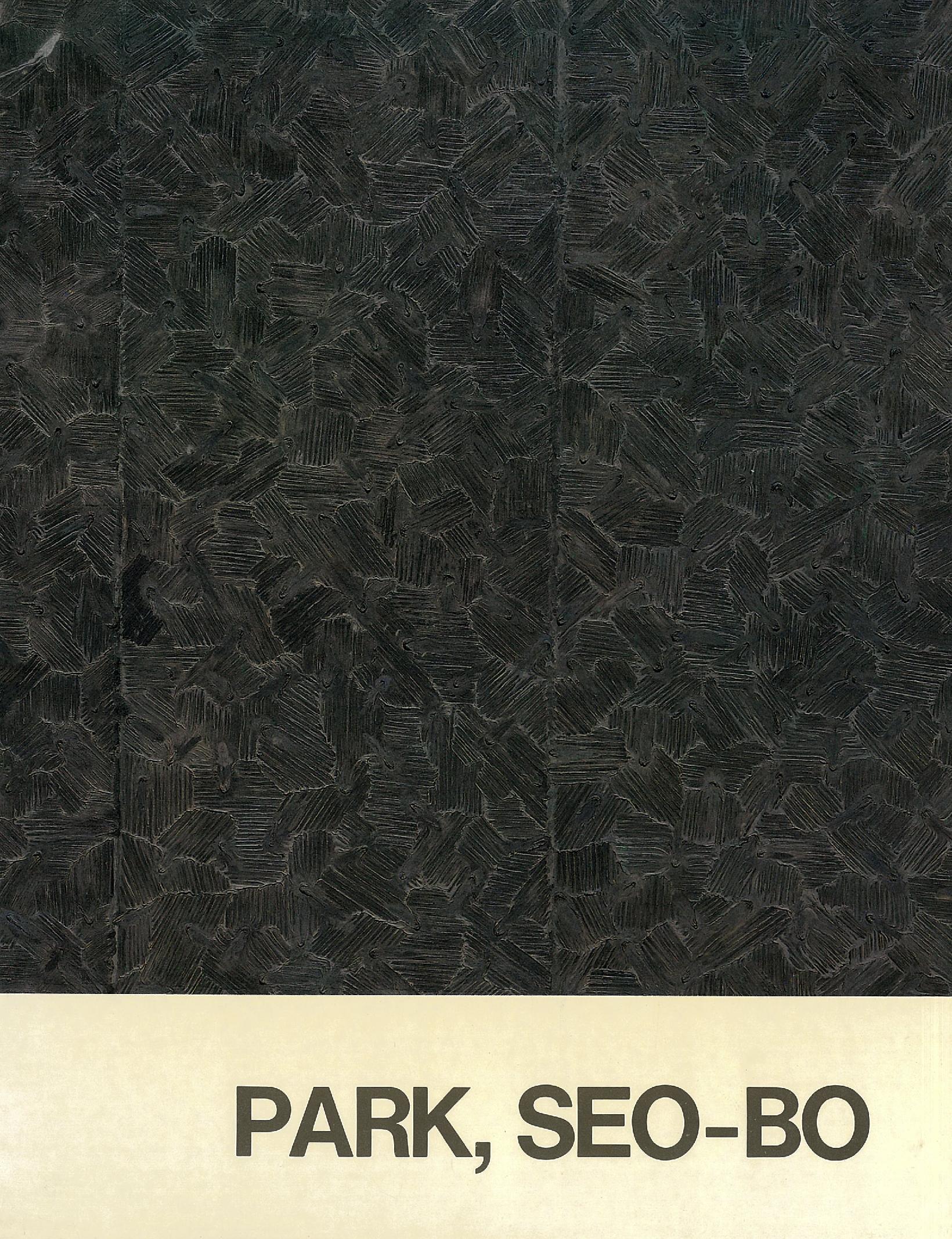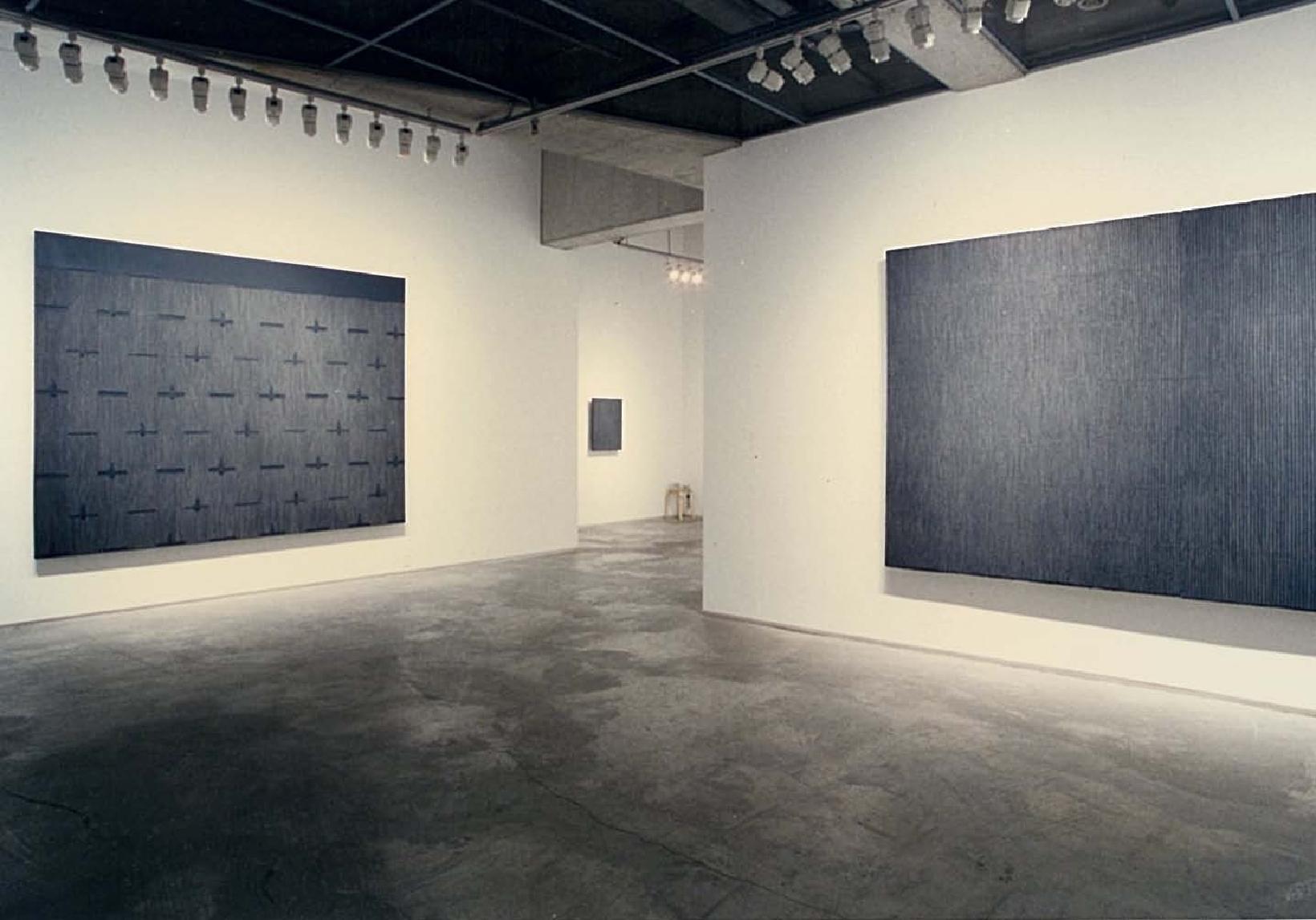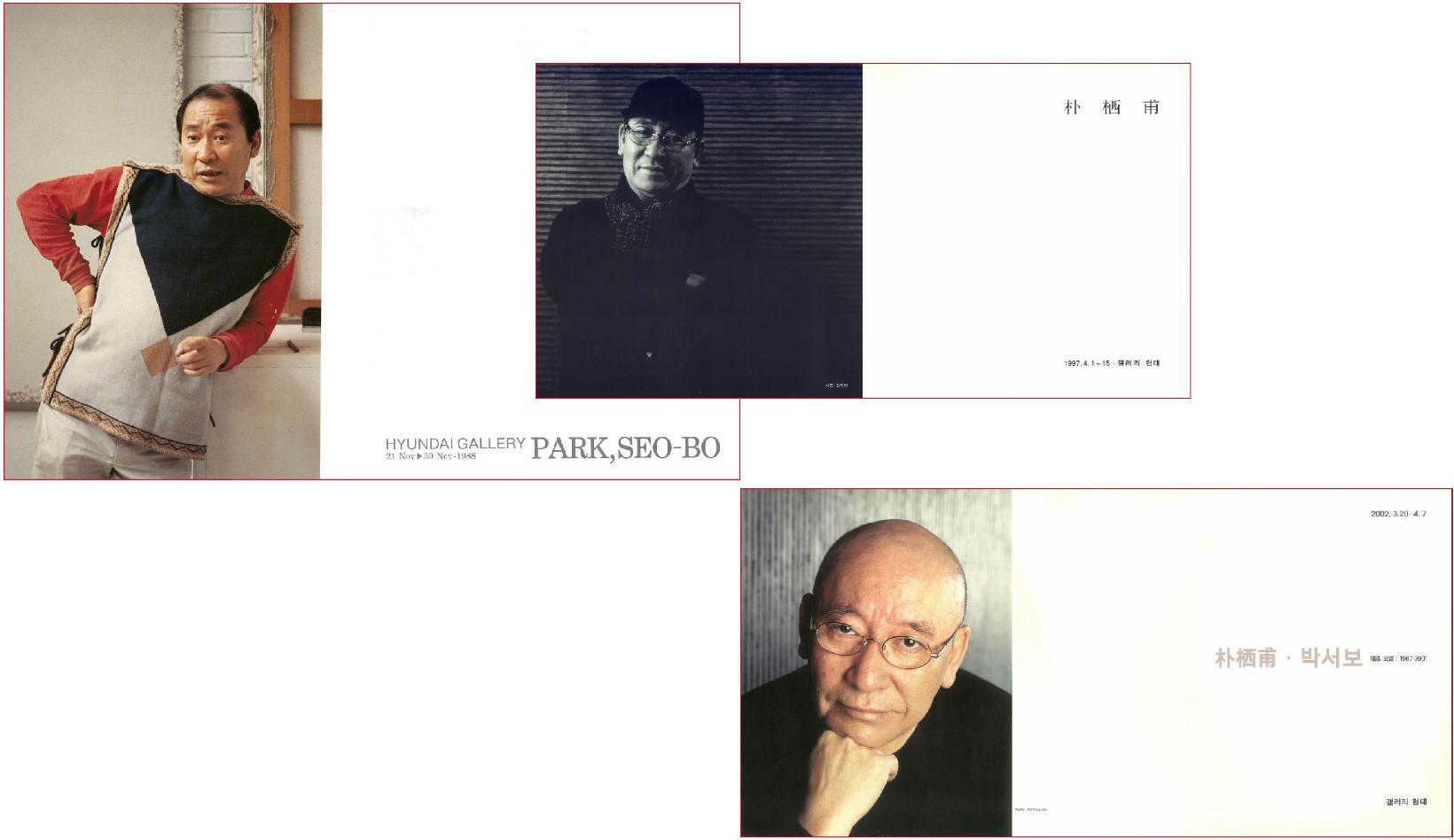*글 하단의 '한국어 텍스트 다운로드'를 클릭하면 원문을 확인할 수 있습니다.
Park Seo-Bo hopes his works provide a source of solace and peace for the viewer. Écriture No. 180411 captivates us like hillsides awash in autumn reds.
The red hues seem almost to emanate from a different world whose depths go beyond the surface of the canvas. Park Seo-Bo’s Écriture No.180411 (2018) is a piece that showcases the characteristics of his later Écriture series works. Beginning in the 1960s and continuing up through the present day Park has devoted himself to the production of this Ecriture series, using hanji (traditional Korean paper) and water-based pigments. The works in this series were completed through a process of repetitive actions — like pasting, scraping, scratching, rubbing — applied to water-soaked hanji. Carried out dozens of times, again and again, this practice of scraping and then polishing becomes an ascetic one, creating long narrow furrows that run vertically along the surface. Together, these furrows seem almost to vibrate, producing a rhythm of color. The three dimensional characteristics compound the visual enjoyment of the viewer. Park explains the choice of hanji by referencing his views on nature.
“We do not distinguish between nature and humans. In other words, we unify them, treating humans as just one part of nature. Resisting the binary. This is the reason we want to adapt to nature, to live as just one part of nature. This is why (we) buy nature. Hanji takes everything into itself. It embraces all. And at the same time it does the work of unifying into one. It is very much in keeping with this world, this view of nature that we hold.” 1)

Park Seo-Bo’s first piece in the Ecriture series was also produced in reds. During a visit to Fukushima, Japan for the opening of a special exhibition marking his seventieth birthday, the artist had become captivated — hypnotized, even — by the fiery red autumn foliage covering the slopes of Mount Bandai. “It was as if the leaves were red with flame, as if they were coming closer, to set me aflame as well,” the artist recalls. Much as the hues of autumn foliage are constantly shifting with the movement of the sun, the hues that appear in Park’s Écriture works are difficult to explain or pin down in one word. Standing before an Ecriture work in blue, Park puts his nose up close and breathes in, explaining that it is “the color of breath” and before a work in bold yellows, he smiles wide and bright, like a child, stating it is “the color of forsythia.” To the artist, the colors of Écriture are the colors of nature, and also simultaneously, “the color of healing.” In this fast-paced high-tech contemporary world, Park’s dearest wish is that his paintings serve as a source of solace and peace just as he himself has been so profoundly moved and consoled by the natural world.

Park’s relationship with Gallery Hyundai began with his participation in the 1979 show, Korean Contemporary Arts: Unique Methods of Exhibition by Four Artists. This special exhibition was designed with the aim of enhancing visitors’ understanding of abstract painting that was still considered to be on the fringes at the time. Showcasing works like Kim Tschang-Yeul’s 'Water Drops,' Park Seo-Bo’s Écriture, Yun Hyong-Keun’s Blue-Umber series, and Lee Ufan’s From Point and From Line, this exhibition was the first to approach the works on display from a methodological perspective. Indeed, the show has since come to be considered an early harbinger of the age of monochrome painting that would soon rise to the forefront of the Korean art world.
The early Écriture works that Park presented at the time were part of a series that experimented with a “drawing method” borrowing from writing techniques. In the earlier works, the canvas is first covered in white paint and then drawn across in pencil. When the artist draws his line before the paint is dry, the paint pushed out of the way by the lead of the pencil creates the effect of a path across the surface. The resulting image directly reflects the movement and rhythm of the artist’s physical body as additional layers and subsequent acts repeat and pile on top of each other. The Écriture series was born from an intense focus on the central question of painting that dominated art in the 1960s, that is, the question of “how” to draw. Interestingly, it is said that this series was also inspired by some scribbles made by the artist’s young son.
“The way, when you cultivate a field and make a furrow in the earth, the soil that gets pushed out becomes itself a form — this moment of human labor coming together with nature to create a single scene: it is similar to that. Much like the way the artist compares his work to that of a literary writer, this ultimately collapses the distinction between line and surface, or drawing and painting, resolving that longstanding binary distinction of Western art. Here, background and gesture are brought to the fore and, in yet another light, remade as one — effectively producing an entirely distinctive kind of flattening; and this, in its turn, holds an unrivaled significance.”2)


In November 1981, not long after Korean Contemporary Arts: Unique Methods of Exhibition by Four Artists, Park opened his first solo show at Gallery Hyundai. In the Gallery Hyundai catalog published at the time, art critic Lee Yill posited that Park’s experiments concerned themselves with the essential issues faced by the painting world.

“In this way, one might claim that the summit reached by Park Seo-Bo’s painting today involves not just the painterly minimization of color and line but also this assertion that “to paint” a given color and “to draw” a given line are not, in fact, actions separate from one another but rather two that make up a whole. And the question raised by this, in turn, may well turn out to be one of the most essential issues faced by the painting world today.”3)
In the years since, Park has debuted new works at Gallery Hyundai over the course of solo exhibitions held in 1988, 1997 and 2002.
Aeri Song is an artist and exhibition manager at Gallery Hyundai.
1) Park Seo-Bo, https://www.youtube.com/watch?v=1wGqe3CVGG0
2) Lee Dong-seok, “The Mind Made Manifest Through Concealment,” Park Seo-Bo, Gallery Hyundai, 2002, p.11
3) Lee Yil, “Park Seo-Bo’s Recent Works: The Ecriture Series,” Park Seo-Bo, Gallery Hyundai, 1981, p.4